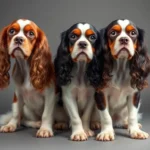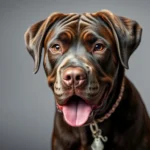
Introduction
When it comes to the world of canines, the variety of dog breeds is vast and varied, each with its own unique traits, histories, and characteristics. Among these, the Bugg has gained significant popularity for its charming appearance and delightful personality. The Bugg is a delightful crossbreed between the Boston Terrier and the Pug, combining the best traits of both parent breeds. This article aims to provide a comprehensive overview of the Bugg, including its history, physical characteristics, temperament, health care needs, living conditions, and the pros and cons of owning one.
History of the Bugg
Origins of the Bugg
To appreciate the Bugg, one must first understand its parent breeds.
The Boston Terrier, known as the “American Gentleman,” was developed in the late 19th century in the United States. This breed is characterized by its friendly disposition, compact size, and distinctive tuxedo-like coat. Originally bred for fighting, Boston Terriers have evolved into affectionate companions.
On the other hand, the Pug has a rich history that dates back to ancient China, where they were prized by royalty. Their charming, wrinkled faces and playful personalities made them beloved pets throughout Europe and beyond.
The Bugg emerged as a designer breed in the early 2000s, aimed at creating a small dog with an affectionate nature and an easygoing attitude. The combination of the Boston Terrier’s liveliness and the Pug’s playful charm has made the Bugg increasingly popular among dog lovers.
Evolution of the Breed
As the demand for designer breeds grew, the breeding practices for the Bugg have evolved. Early breeding focused on achieving a balance of traits from both parent breeds, resulting in a dog that is both playful and affectionate. Over time, the Bugg has gained recognition in various dog clubs, although it is not yet recognized by major kennel clubs like the AKC. This recognition is likely to grow as more people come to appreciate this charming mix.
Physical Characteristics
Size and Weight
The Bugg typically stands between 10 to 15 inches tall and weighs between 15 to 25 pounds. This compact size makes it an ideal companion for those living in smaller spaces. When compared to its parent breeds, the Bugg falls in between the sizes of the Boston Terrier, which usually weighs around 10 to 25 pounds, and the Pug, which generally weighs 14 to 18 pounds.
Coat and Color
The Bugg has a short, smooth coat that requires minimal grooming. Common colors include fawn, brindle, and black, often with white markings reminiscent of its Boston Terrier ancestry. Its coat is not only easy to maintain but also adds to its overall charm.
Distinctive Features
One of the most notable features of the Bugg is its face, which inherits the signature wrinkled appearance from the Pug, along with a more squared-off shape from the Boston Terrier. This unique combination gives the Bugg a sweet, expressive face. Additionally, their sturdy body structure, with a broad chest and compact limbs, contributes to their overall appeal.
Temperament and Behavior
General Temperament
The Bugg is known for its friendly, playful, and affectionate nature. This breed tends to be highly sociable, enjoying the company of people and other pets alike. Compared to its parent breeds, the Bugg may exhibit a slightly more laid-back temperament than the energetic Boston Terrier, while still retaining the playful spirit characteristic of the Pug.
Socialization Needs
Early socialization is crucial for the Bugg. Exposing them to a variety of people, environments, and other animals helps to ensure they grow into well-rounded adults. They are generally good with children and can easily adapt to living with other pets, making them an excellent choice for families.
Training and Intelligence
The Bugg is relatively intelligent and eager to please, which can make training easier. However, their playful nature may sometimes lead to stubbornness. Positive reinforcement techniques, such as treats and praise, are effective in training this breed. Consistency and patience are key to successful training sessions.
Health and Care Requirements
Common Health Issues
Like many mixed breeds, the Bugg can inherit health issues from both parent breeds. Common health concerns include respiratory issues due to their short snouts, as well as obesity if not properly managed. Regular veterinary check-ups are essential to monitor their health and address any potential issues early on.
Nutrition and Diet
A well-balanced diet is vital for the Bugg‘s health. High-quality dog food formulated for small breeds is recommended. Owners should consider their dog’s age, weight, and activity level when determining the appropriate diet. Treats should be given in moderation to avoid excessive weight gain.
Grooming Needs
The Bugg has a low-maintenance coat that requires minimal grooming. Regular brushing can help keep their coat healthy and minimize shedding. Bathing should be done as needed, typically every few months or when they become particularly dirty. Regular dental care and nail trimming are also important aspects of their grooming routine.
Living Conditions
Ideal Living Environment
The Bugg is well-suited for various living environments, including apartments and houses. Due to their small size, they do not require a large amount of space. However, they do appreciate having a secure area where they can play and explore.
Exercise Requirements
Despite their small size, the Bugg has moderate exercise needs. Daily walks, playtime in the yard, or indoor play sessions can help keep them physically and mentally stimulated. A good rule of thumb is to provide at least 30 minutes of exercise each day, though they may enjoy longer sessions if their energy levels allow.
Pros and Cons of Owning a Bugg
Advantages
- Companionship and Loyalty: The Bugg is known for its affectionate nature, making it a loyal companion for families and individuals alike.
- Adaptability: This breed adapts well to various living situations, whether in an apartment or a house with a yard.
Disadvantages
- Potential Health Concerns: Like many brachycephalic breeds, the Bugg can be prone to respiratory issues, which may require careful monitoring.
- Grooming and Care Responsibilities: While grooming needs are minimal, regular care is still necessary to keep them healthy and happy.
Conclusion
In summary, the Bugg is a delightful breed that combines the best traits of the Boston Terrier and the Pug. With its friendly disposition, compact size, and moderate exercise requirements, this breed can make a wonderful addition to many households. Potential owners should consider their lifestyle and the care needs of the Bugg before making a decision. Researching the breed further and considering adoption from shelters or reputable breeders can help ensure that you find the perfect companion.
By understanding the unique characteristics of the Bugg, you can determine if this charming breed is the right fit for you and your family.









